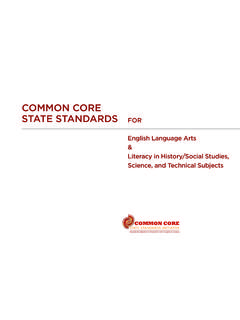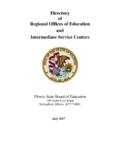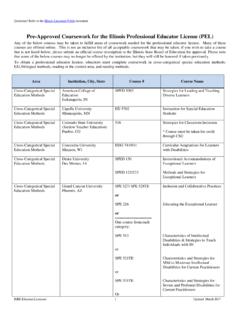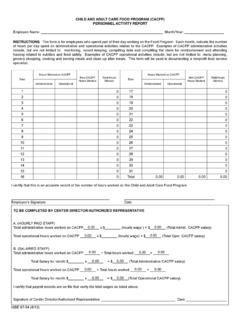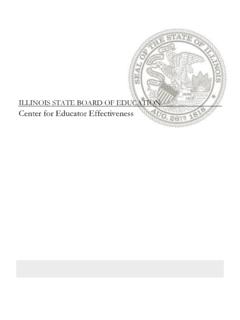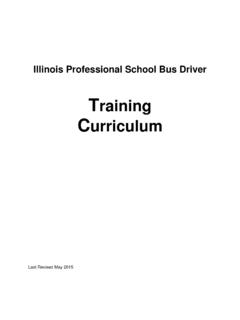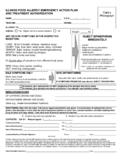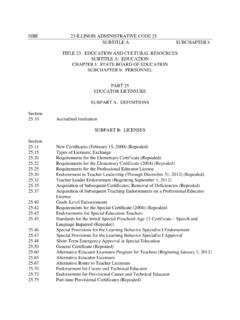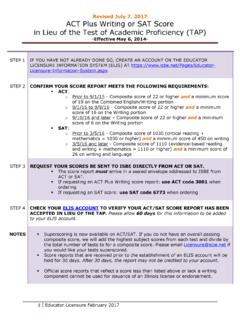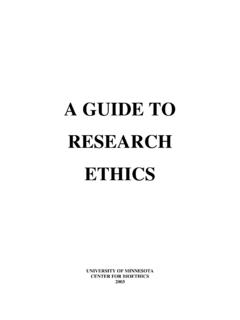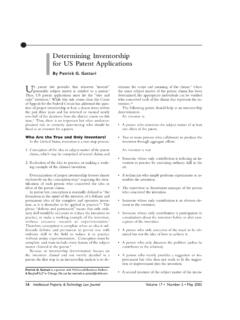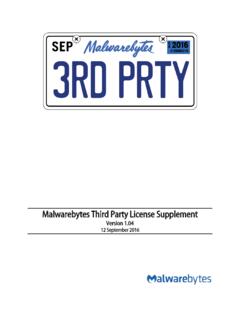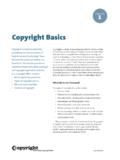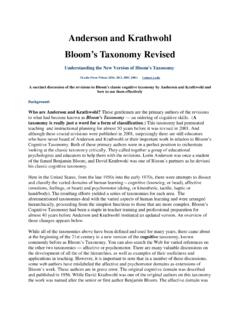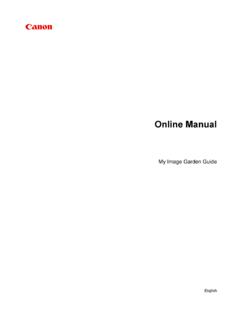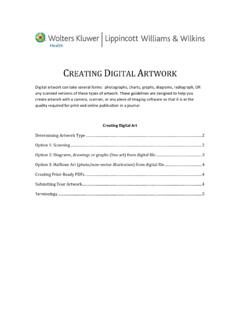Transcription of Inquiry - isbe.net
1 DRAFT- For implementation in the 2022-2023 School Year ILLINOIS SOCIAL SCIENCE STANDARDS Inquiry Inquiry K-2 Developing Questions and Planning Inquiries Constructing Essential Questions 1 Create questions that are relevant to self as they relate to the content of the Social Science Standards. determining Helpful Resources With guidance and support, students will use varied teacher-selected resources to learn procedures to locate evidence that assists with finding answers to their questions. Introduce the importance of informational resources that are reliable and distinguish fact from opinion. Evaluating Sources and Using Evidence Gathering and Evaluating Sources With guidance and support, gather relevant information from multiple sources to analyze information.
2 Developing Claims and Using Evidence With guidance and support, evaluate a source by distinguishing between fact and opinion. Communicating Conclusions and Taking Informed Action Communicating Conclusions With guidance and support, students will share their findings on the asked and answered questions with peers. Taking Informed Action With guidance and support, reflect on one's Inquiry process and findings. Using various viewpoints, students will engage in reflective conversations to draw conclusions on Inquiry findings and create action steps. DRAFT- For implementation in the 2022-2023 School Year Inquiry 3-5 Developing Questions and Planning Inquiries Constructing Essential Questions Develop essential questions and explain the importance of the questions to self and others.
3 Constructing Supporting Questions Students generate supporting questions that require investigation to help answer essential questions. determining Helpful Resources Identify varied resources that answer essential and student-generated questions and that take into consideration multiple points of view. Evaluating Sources and Using Evidence Gathering and Evaluating Sources Gather relevant information and distinguish between fact and opinion to determine credibility of multiple sources. Developing Claims and Using Evidence Develop claims using evidence from multiple sources to answer essential questions. Communicating Conclusions and Taking Informed Action Communicating Conclusions Construct arguments using claims and evidence from multiple sources.
4 Construct explanations using reasoning, correct sequences, examples, and details with relevant information and data. Present a summary of arguments and explanations to others inside and/or outside of the classroom using print and oral technologies. Critiquing Conclusions Explain the use of Inquiry strategies, approaches, and relevant sources that will allow students to address local, regional, state, national, and global problems. Taking Informed Action Students will engage in reflective conversations to draw conclusions on Inquiry findings and create action steps that consider multiple viewpoints. DRAFT- For implementation in the 2022-2023 School Year Inquiry 6-8 Developing Questions and Planning Inquiries Constructing Essential Questions Create essential questions that consider multiple perspectives to guide Inquiry about a topic.
5 Constructing Supporting Questions Ask essential and focused questions that consider multiple perspectives and will lead to independent research. determining Helpful Resources Determine sources representing multiple points of view and diversity of authorship that will assist in organizing a research plan. Evaluating Sources and Using Evidence Gathering and Evaluating Sources Determine the value of sources by evaluating their relevance and intended use. Determine the credibility of sources based upon their origin, authority, and context. Gather relevant information from credible sources and determine whether they support each other.
6 Developing Claims and Using Evidence Appropriately cite all the sources that are used. Identify evidence from multiple sources to support claims, noting any limitations of the evidence. Develop claims and counterclaims using evidence from credible sources while pointing out the strengths and limitations of both. Communicating Conclusions and Taking Informed Action Communicating Conclusions Construct arguments using claims and evidence from multiple sources, while acknowledging the arguments' strengths and limitations. DRAFT- For implementation in the 2022-2023 School Year Construct explanations for a specific audience using reasoning, correct sequences, examples, and details, while acknowledging their strengths and weaknesses.
7 Present arguments and explanations that would appeal to audiences and venues outside of the classroom, using a variety of media. Critiquing Conclusions Critique the structure and credibility of arguments and explanations (self and others) about a topic. Taking Informed Action Analyze how a problem can manifest itself, identify the individuals and communities impacted by a problem, and address the challenges and opportunities faced by those trying to take action toward solutions. Assess individual and collective capacities within a given context to take action, address problems, and identify potential outcomes.
8 Apply a range of deliberative and democratic procedures to make decisions and take action in schools and community contexts. Inquiry 9-12 Developing Questions and Planning Inquiries Constructing Essential Questions Create actionable, student-driven (or student-informed) questions that lead to social studies investigations beyond one's immediate cultural environment or lens. Constructing Supporting Questions Develop culturally informed, student-driven supporting questions that contribute to Inquiry and evaluate the purpose of supporting questions in the research and Inquiry process. determining Helpful Resources new supporting and essential questions by primary and secondary investigation, collaboration, and use of sources that reflect diverse perspectives ( , political, cultural, socioeconomic, race, religious, gender).
9 DRAFT- For implementation in the 2022-2023 School Year Evaluating Sources and Using Evidence Gathering and Evaluating Sources Determine the kinds of sources that will be helpful in answering compelling and supporting questions, taking into consideration multiple points of view represented in the sources, the types of sources available, and the potential uses of the sources. and evaluate information from multiple primary and secondary sources that reflect the perspectives and experiences of multiple groups, including marginalized groups. Developing Claims and Using Evidence Analyze evidence and identify counter perspectives to revise or strengthen claims.
10 Construct arguments using precise and knowledgeable claims with evidence from multiple sources, while acknowledging counterclaims, perspectives, and biases. Evaluate evidence to construct arguments and claims that use reasoning and account for multiple perspectives and value systems. Communicating Conclusions and Taking Informed Action Communicating Conclusions Develop and prepare communication by identifying stakeholders (or audiences) and evaluate what messages and media are likely to result in stakeholder support or opposition. Critiquing Conclusions Solicit feedback from stakeholder representatives and revise communication and action plans accordingly.
